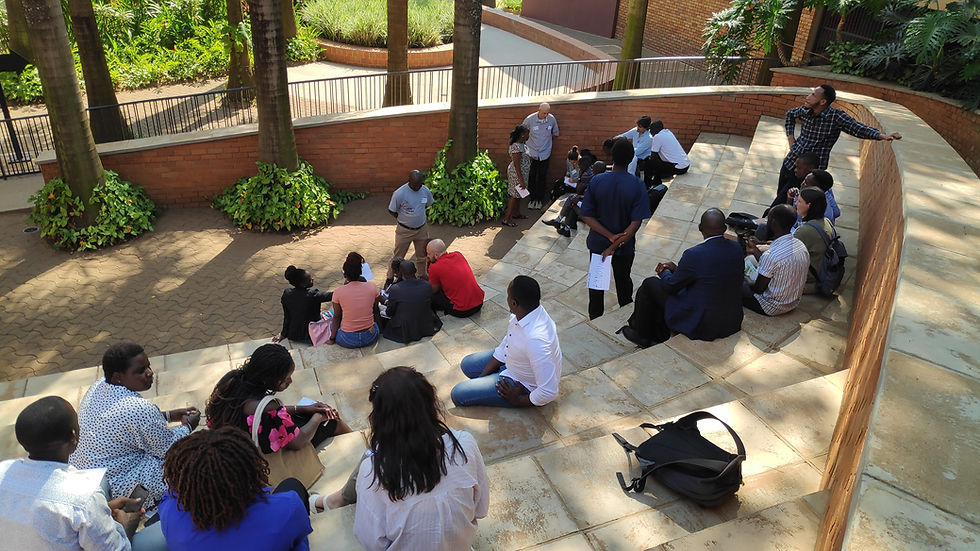Rubengera Technical Secondary School
- info8381132
- Jan 1, 2020
- 3 min read
At the beginning of the year I traveled to Rwanda to help with the construction of the girls’ dormitories for Rubengera Technical Secondary School.

The project follows on from the construction of the kitchen as part of the next phase of the school’s vision and masterplanning of the site. This first dormitory building to house girls at the school will be an important step towards the school’s aspiration to provide accommodation for students on campus.
The building is designed to house a maximum of 24 students with showers and eco-san toilets and a room for an animatrice who looks after the girls. The building is sited along a terrace that will in the future form rows of student residences. Deep projecting window and door surrounds made by students at the school out of Eucalyptus provide privacy and shading while a colonnade to the south offers views across the green valley.
One of the main ambitions for the project was to design a roof structure using eucalyptus as a locally sourced low carbon alternative to steel that could be prefabricated at the school. Eucalyptus is not native to Africa but grows everywhere following its introduction from Australasia in the early 20th century. It is fast growing and is well adapted to growing at the high altitudes of Rwanda. It is typically used in unsawn sections in buildings but is not very stable and cannot span large distances.
In collaboration with German Partners and guidance from engineers at Buro Hapold we developed the design for the dormitories that incorporates an I-beam roof structure made from eucalyptus and plywood. The design also uses Strawtec, a locally produced sustainable product made of wheat and rice straw to create the internal partitions. The renewable material is 100% recyclable/biodegradable and has a carbon negative footprint.
Construction of the dormitories started on site in autumn last year. The school employed a local contractor to carry out the groundworks and construction of the primary concrete structure and brick infill walls. It was the first time the school coordinated and managed a project on site autonomously which was challenging but provided opportunity for teachers to develop their skills and experience for future development at the school.
My visit was planned to coincide with that of Tim Bluthardt and a team of German Carpenters from Fingerhaus who were instrumental in the design development of the timber composite I-beam. After a brief meeting to discuss the details and coordination on site, the team got to work in the workshop to finish the prefabrication of the roof elements. It was an amazing effort with everyone at the school getting involved, even the sisters were helping with the sanding. With all the roof elements and eucalyptus columns prepared the carpenters erected the roof structure quickly in between the incredibly heavy downpours. Paul Kimera, RFF’s technical field officer was also on site sharing his guidance and expertise on site infrastructure and civils.
There are lessons to be learnt from this pilot project that we hope to take forward and input into future dormitory buildings. With further development it will be possible to simplify the design and reduce the amount of timber used. Using the materials more efficiently will make the timber roof structure an even better alternative to steel both environmentally and economically. Through using Strawtec the project team has gained greater understanding of using local renewable products available and we hope to use these more extensively in future projects.




Comments